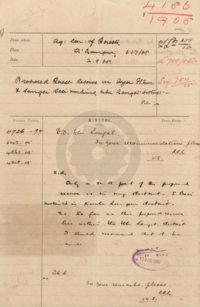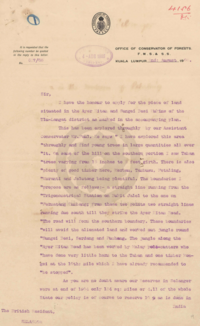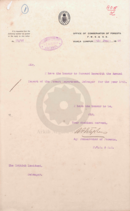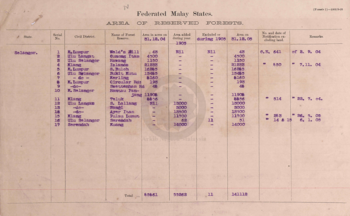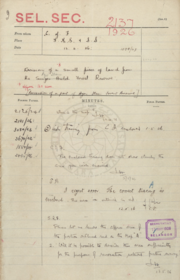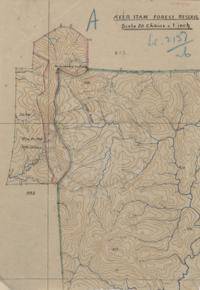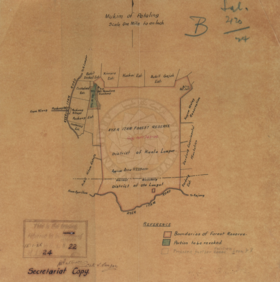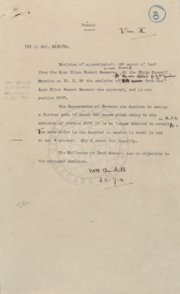This is an old revision of the document!
Jadual Kandungan
Hutan Simpan Ayer Itam (1905-kini)
Dirujuk oleh
Perihal
“The Ayer Hitam forest reserve in Puchong is one of the most precious tracts of remaining lowland dipterocarp forest in highly urbanized Selangor state. Originally covering 4270 hectares and gazetted as a forest reserve way back in 1906, it has suffered from a series of de-gazettements throughout the years, until it is now only some 1200 hectares. Even this is being reduced as I speak, as developers continue to quietly eat away at the borders of the reserve. The forest is now totally surrounded by “concrete jungle”. The reserve is leased out to a nearby local university, University Putra Malaysia (UPM) since the 1990s, for 80 years, as a living “laboratory” for students to conduct research, but as I see it, its future is far from assured. Another tract of forest towards the north, the Bukit Cherakah forest reserve, has already suffered greatly from surrounding housing development despite being the nation’s Agro-Forestry Park, and is rapidly being whittled down to a few hundred hectares from its original 1300 hectares; the Ayer Hitam forest reserve will likely end up the same way as well.” (JungleBoy @ RAINFOREST JOURNAL, August 10, 2012: |"Ayer Hitam Forest Reserve, Puchong").
“The forest's original area covered 4,270.7 hectares which was gazetted as a closed forest reserve in 1906; however, the size has since dropped to 1,176.1 hectares due to rapid development and industrialisation activities. Awang Noor et al. (2007) claimed that it has lost almost 68% of its forested area within 14 years from 1983 to 1997.” (Mohd Kher Hussein, Mohd Johari Mohd Yusof and Nor Syuriaty Jaafar @ Journal of Construction in Developing Countries, 25(2), 153–173, 2020: |"An Observational Study on Forest Landscape Conservation in Malaysia via the Establishment of Forestry Educational Centres", m.s.2).
1905-08-02: Proses Pewartaan
Pada 8 Februari 1905, Office of Conservator of Forests F.M.S. & S.S., di bawah seliaan pegawai perhutanan Arthur B. (A.B.) Stephens, memohon sebidang tanah di antara Ayer Itam dan Sungei Besi untuk tujuan pewartaan sebagai hutan simpan. Menurut laporan pembantu beliau Mr. Paul, terdapat banyak pokok Taban (Gutta Percha) muda berukur lilit antara 18 inci hingga 3 kaki, juga banyak pokok balak spesis Merbau, Tembusu, Petaling, Meranti dan Jelutong. Cadangan sempadannya bermula dari stesen trigonometri di puncak Permatang Kumbang dan Bukit Jalel hingga ke Jalan Ayer Itam. Selain itu, pewartaan ini juga penting bagi negeri Selangor untuk mencapai sasaran luas rizab hutan simpannya agar meliputi 10% daripada jumlah keluasan negeri, sebagaimana yang telah ditetapkan di India:-
“I have the honour to apply for the piece of land situated in the Ayer Itam and Sungei Besi Mukims of the Ulu-Langat district as marked in the accompanying plan. This has been explored thoroughly by our Assistant Conservator Mr.Paul. He says “I have explored this area throughly and find young trees in large quantities all over it. On some of the hill on the southern portion I saw Taban trees varying from 18 inches to 3 feet in girth. There is also plenty of good timber here, Merbau, Tembusu, Petaling, Meranti and Jelutong being plentiful. The boundaries I propose are as follows:- a straight line running from the Trigonometrical Station on Bukit Jalel to the one on Permatang Kumbang; from these two points two straight lines running due south till they strike the Ayer Hitam Road. The road will form the southern boundary. These boundaries will avoid the alienated land and worked out jungle round Sungei Besi, Serdang and Puchong. The jungle along the Ayer Hitam Road has been worked by Malay pole-cutters who have done very little harm to the Taban and one timber kongsi at the 10th: mile which I have already recommended to be stopped”. As you are no doubt aware our Reserves in Selangor were at end of 1904 only 134sq: miles or 4.11 of the whole State our policy is of course to reserve 10% as is done in India. … - A.B. Stephens”
Terdapat sedikit kekhuatiran bahawa pewartaan ini mengurangkan sumber kayu api untuk kegiatan perlombongan di Sungei Besi: “I see no objection to the proposed reserve except that the Sungei Besi Miners will have their principal supply of firewood taken away.”
A.B. Stephens menjelaskan, masih terdapat banyak sumber kayu api di sekitar Jalan Cheras dan Jalan Ayer Itam, serta pinggir hutan simpan cadangan. Jika tidak mencukupi sekalipun, hutan simpan masih boleh dinyahwartakan setiap tahun secara berperingkat. Jika tidak diwartakan, sumber tersebut akan habis lebih cepat, lalu menyebabkan kenaikan harga bahan api, sebagaimana yang telah berlaku di Kuala Lumpur: “The above objection does not hold good as there is no lack of firewood adjoining the road to Cheras and 1st to 5th mile Ayer Itam road both sides. Also for 2 miles on every side of the reserve. It is just in such places we want to Reserve for the benefit of the miners as where all other sources fail we would open the Reserve to the woodcutters in yearly coupes. If this had been done when I suggested it around K L in 1897 we should not now have to pay such a price for our firewood. ? my report to the Resident about that year.”
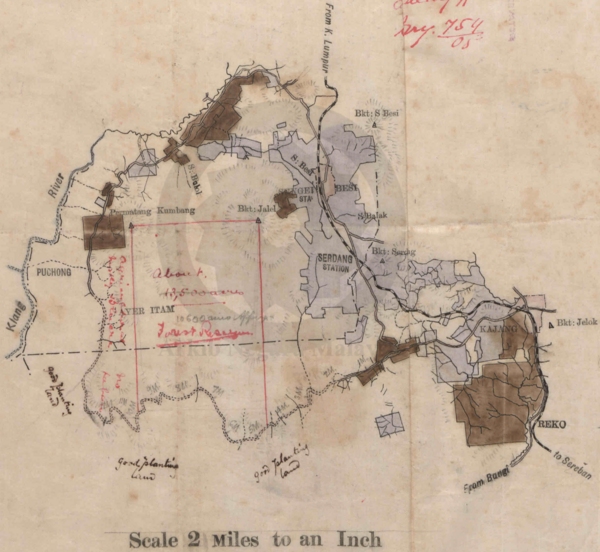
Cadangan Awal Hutan Ayer Itam (21 Julai 1905).
Beliau seterusnya memohon untuk memperluaskan lagi sempadan hutan agar meliputi keseluruhan kedua-dua bukit Permatang Kumbang dan Bukit Jalel: “Yes I spoke to the Resident about including the two Hills (all available parts of Itam) in the Reserve I mean those with the Trig stations on them in NW & NE corners. He agreed to this.”
Berikutan permohonan pindaan ini, tinjauan semula terpaksa dibuat di kawasan tersebut pada 14 November 1905, dan berlarutan sehingga akhirnya diwartakan lebih setahun kemudian (Gazette No. 743 of 1906, sekitar Disember 1906).
(Sumber: PEJABAT SETIAUSAHA KERAJAAN NEGERI SELANGOR, 02/08/1905: |"PORPOSED FOREST RESERVE IN AYER ITAM AND SUNGEI BESI MUKIMS, ULU LANGAT DISTRICT - RE :-").
1906-01-29: Laporan Tahunan Hutan Selangor (1905)
Laporan tinjauan kawasan-kawasan cadangan hutan simpan di Kuang, Sungei Lallang, Bangi, Ayer Itam, Sungei Guntong, Pulau Lumut, Pulau Jugra, dan Ijok, di bawah seliaan A.B. Stephens. Tinjauan Hutan Simpan Ayer Itam sedang dijalankan oleh Mr. Jansze, Forest Surveyor:-
“Ayer Itam, and Ulu Gombak were proposed as Forest Reserves. Work on the former is being carried on by Mr: Jansze - Forest Surveyor, while the latter is being left for want of a Surveyor. Both these reserves contain valuable timber and taban. … Mr: Jansze very nearly finished the extention of the Rantau Panjang reserve, when heavy rains compelled him to stop work. He was then sent to Ayer Itam and is still going on with that work. The sum of $9745.03 was expended during the year on this work.”
(Sumber: PEJABAT SETIAUSAHA KERAJAAN NEGERI SELANGOR, 29/01/1906: |"ANNUAL REPORT OF THE FOREST DEPARTMENT, SELANGOR, FOR THE YEAR 1905").
1926-04-13: Penyahwartaan Awal
Sepanjang pertengahan pertama kurun ke-20, secara umumnya hutan ini agak terpelihara, walaupun terdapat sedikit penyahwartaan beberapa kawasan kecil di bahagian sempadannya. Antara contoh rekod tersebut ialah pada 13 April 1926, di mana 2 siri penyahwartaan telah diluluskan:-
- 18 Februari 1926: 160 ekar (portion 2670) telah dinyahwartakan.
- 13 April 1926, permohonan penyahwartaan 160 ekar lagi. Ianya diluluskan pada 4 Ogos 1926.
“Excision of approximately 160 acres of land from the Ayer Hitam Forest Reserve is now desired. At the State Council Meeting on 18.2.26 the excision of the area applied for by Mr. Gardner(?) from the Ayer Hitam Forest Reserve was approved, and is now portion 2670. The conservator of Forests now desires to excise a further area of about 160 acres which owing to the excision of portion 2670 it is no longer desired to retain in the F.R. The area which is now desired to excise is shown in red on map A annexed. Map B shows the locality. The Collector of Land Revenue has no objection to the proposed excision. - WFN Churchill, 25.7.26.
State Council 29.7.26: The excision of approximately 160 acres is approved as desired by C of F. - WFN Churchill, 4.8.26.”
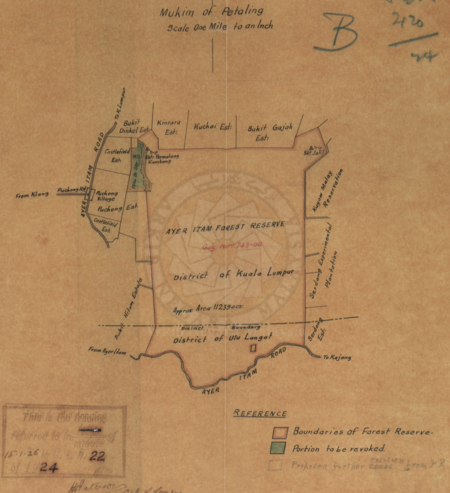
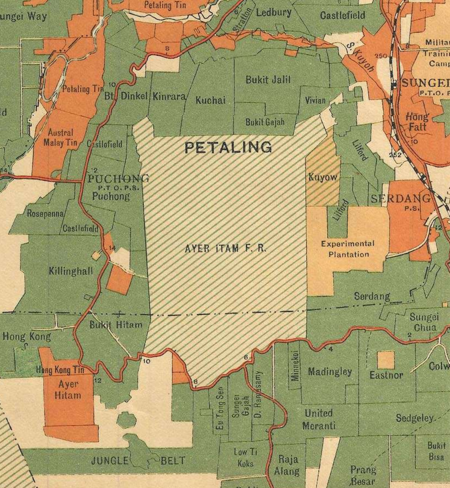
Kiri: Peta Hutan Simpan Ayer Itam, ketika penyahwartaan sebahagian kecilnya (kawasan berlorek di sebelah barat laut) dibuat pada 13 April 1926.
Kanan: Peta Hutan Simpan Ayer Itam, tahun 1929 (berdasarkan peta Edward Stanford @ F.M.S. Survey Department, 1929: |"1929 F.M.S. Wall Map of Selangor (Kuala Lumpur)").
(Sumber: PEJABAT SETIAUSAHA KERAJAAN NEGERI SELANGOR, 13/04/1926: |"EXCISION OF A SMALL PIECE OF LAND FROM THE AYER ITAM FOREST RESERVE [REVOCATION OF A PART OF AYER ITAM FOREST RESERVE]").
Selain penyahwartaan di atas, terdapat juga sedikit aktiviti ekonomi yang dijalankan secara terkawal di dalam kawasan hutan simpan ini:-
- 1925-03-03: Pemotongan kayu api (PEJABAT SETIAUSAHA KERAJAAN NEGERI SELANGOR, 03/03/1925: |"PETITION REGARDING A POWER OF ATTORNEY GIVEN TO HIM FOR CUTTING FIREWOOD IN AYER ITAM FOREST RESERVE").
- 1927-06-01: Permohonan perlombongan di kawasan paya, tidak pasti ianya diluluskan atau tidak (PEJABAT SETIAUSAHA KERAJAAN NEGERI SELANGOR, 01/06/1927: |"APPLICATION BY MR. J.A. RUSSELL FOR A PERMIT TO PROSPECT OVER THE AREAS OF SWAMP IN THE AYER ITAM RESERVE :").
- 1933-02-11: Terdapat rel tram, mungkin pernah digunakan untuk mengeluarkan hasil hutan (PEJABAT SETIAUSAHA KERAJAAN NEGERI SELANGOR, 11/02/1933: |"LENDING OF THE TRAMWAY, AYER ITAM FOREST RESERVE").
Peta Hutan Simpan Ayer Itam: 1929 dan 1950

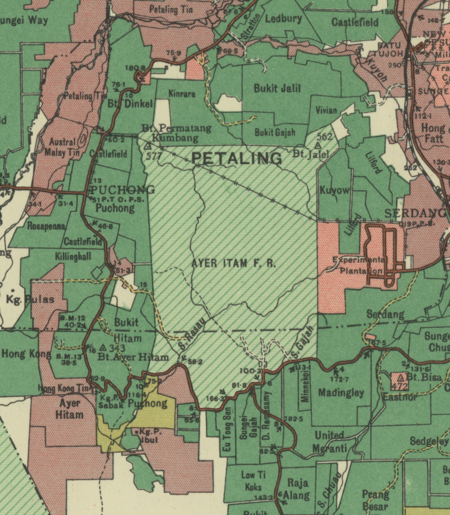
Kiri: Peta Hutan Simpan Ayer Itam, tahun 1929 (berdasarkan peta Edward Stanford @ F.M.S. Survey Department, 1929: |"1929 F.M.S. Wall Map of Selangor (Kuala Lumpur)").
Kanan: Peta Hutan Simpan Ayer Itam, tahun 1950 (berdasarkan peta Surveyor General, Malaya, 1950 @ Australian National University: |"Malaysia, Malaya, Selangor 1950, Land Use, South Sheet, 1950, 1:126 720").
Umumnya persempadanan Hutan Simpan Ayer Itam ketika ini masih kekal sebagaimana sebelumnya.
1936-1965: Penebangan Terpilih
Sepanjang tahun 1936 hingga 1965, terdapat rekod penebangan terpilih dijalankan di hutan ini, namun pada umumnya masih terpelihara: “Based on the observation, it was found that SISFEC has a valuable biodiversity of genetics, species and ecosystem levels. Its natural landscape has been conserved properly and kept in good condition (as shown in Figure 3) even though historically this site was selectively logged several times ago between the years of 1936 to 1965.” (Mohd Kher Hussein, Mohd Johari Mohd Yusof and Nor Syuriaty Jaafar @ Journal of Construction in Developing Countries, 25(2), 153–173, 2020: |"An Observational Study on Forest Landscape Conservation in Malaysia via the Establishment of Forestry Educational Centres", m.s.11).
1989-02-19: Kapal Terbang Terhempas
Pada pagi Ahad 19 Februari 1989 (6.36am), pesawat kargo Boeing 747-249F bernombor pendaftaran N807FT yang membawa muatan kargo dari Singapura telah terhempas di sekitar Puchong, 180 m (591 kaki) dari aras laut, ketika memulakan proses pendaratan 12 km (7.5 batu) dari Lapangan Terbang Antarabangsa Subang, Kuala Lumpur (KUL). Lokasi nahas dipercayai di dalam kawasan Hutan Simpan Ayer Itam. Keempat-empat orang kakitangan dalam pesawat telah terkorban.
Punca nahas ialah salah faham dalam komunikasi di antara menara kawalan dan juruterbang pesawat: “Narrative: The Boeing, named “Thomas Haywood”, was less than half loaded with textiles, computer software and mail when it departed Singapore. Approaching Kuala Lumpur, the crew were cleared to route direct to the Kayell (KL) beacon for a runway 33 approach. While on the NDB approach, the crew were cleared to ”…descend two four zero zero…“ which was interpreted by the crew as ”…to 400…“. The aircraft descended below minimum altitude and crashed into a hillside at 600 feet/180 m msl just before reaching the Kayell NDB, where minimum descent height was 2400 feet. The Boeing hit treetops and started to break up until bursting into flames. PROBABLE CAUSE: Non-standard phraseology was used by Kuala Lumpur ATC, causing the crew to misinterpret the instructions.”
(Sumber: Aviation Safety Network (ASN): |"Sunday 19 February 1989").
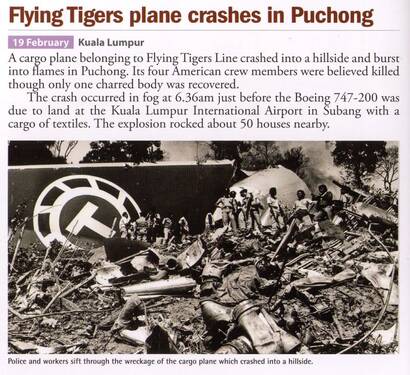
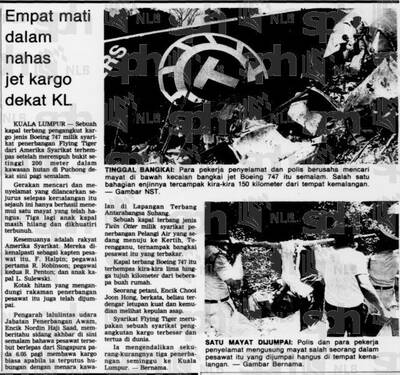
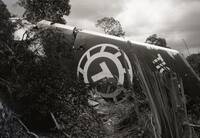



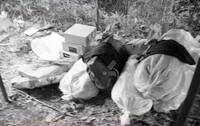
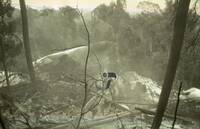
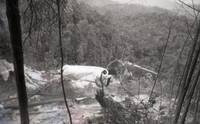
“Copyright to Jabatan Penerangan Malaysia.” (Ashmil Abd Ghani @ MalaysianWings, April 29, 2013: |"Flying Tiger Line Flight 66 Crashed in Puchong on 19 February 1989").
“On February 19, 1989, a Boeing 747-249F operating as Flying Tiger Flight 66 was flying an international cargo flight from Singapore to Kuala Lumpur, Malaysia. The aircraft impacted terrain 12 miles from the airport, resulting in 4 fatalities.
The aircraft was assigned an non-directional beacon (NDB) approach to Runway 33 at Sultan Abdul Aziz Shah Airport, Kuala Lumpur, after having flown 30 minutes from Singapore Changi Airport.[1] In descent, the flight was cleared to “Kayell” with a morse code of “KL” of which four separate points on the ground were commonly called by Malaysian ATC albeit with different frequencies. Two separate radio beacons were identically coded “KL” as well as the VOR abbreviation (Kuala Lumpur shortened to “KL”) and the airport was also sometimes referred to as “KL” by local ATC (instead of the full “Kuala Lumpur”). The crew was unsure to which point they were cleared, and the cockpit voice recorder revealed that the crew argued about which radios should be set to which frequencies and which approach was actually going to be conducted. (Even in the last few moments of the flight, the captain referenced the ILS approach for runway 33 which was notamed as inop on the flight release and the ATIS, additionally the crew was told by ATC that the ILS approach was not available.)
ATC radioed to the flight, “Tiger 66, descend two four zero zero [2,400 ft]. Cleared for NDB approach runway three three.” The captain of Tiger 66, who heard “descend to four zero zero” replied with, “Okay, four zero zero” (meaning 400 ft above sea level, which was 2,000 ft too low). The proper radio call from ATC, instead of “descend two four zero zero”, should have been “descend and maintain two thousand four hundred feet”. The captain read back “okay, four zero zero” where the proper read back should have been “Roger, descend and maintain four-hundred feet”. The Cockpit voice recorder[2] also revealed several communication errors made by the flight crew prior to this miscommunication and a revealed general casual nature of the Captain, who was the pilot-not-flying on this particular leg of the trip.
Numerous clear warnings were given by the on-board Ground Proximity Warning System all were ignored entirely by the crew, and the aircraft impacted a hillside 437 ft above sea level, killing all four people on board; two pilots, a flight engineer and an aircraft mechanic. The subsequent fire burned for two days[3].
The First Officer had complained that he did not have an approach plate in front of him and hadn't seen the approach. Additionally, the FO, who was the pilot flying at the time, expressed concern about conducting the NDB approach and indicated a preference for the ILS for runway 15. However, the FO was not assertive and no further action was taken. The Captain dismissed his concern saying he was familiar with the airport and the approaches. The second officer was 70 years old and used a magnifying glass to see.[citation needed] A contributing factor to this accident was the non-ICAO International Civil Aviation Organization phraseology used by Kuala Lumpur air traffic control and the Captain of the aircraft. This breakdown of communication contributed to the crew misinterpreting the instructions given. However, this notorious controlled-flight-into-terrain accident ultimately resulted from a crew failure to adhere to the instrument approach procedure, poor crew resource management and poor situational awareness.[1]
This accident caused the creation of the GPWS escape maneuver which all airlines now use[citation needed]. It further stressed the need for increased awareness and training of crew resource management techniques and standard operating procedures. This accident is used as an example of 'what not to do' by flight training organizations such as FlightSafety International. The FAA video production[4] using the original CVR is still used to study the events and how to improve current techinques. Much of this information is derived from that video.”
(Sumber: Not Avail @ Youtube, 9 Sept 2011: "BOEING 747 CRASH CVR COCKPIT VOICE RECORDING CFIT BLACK BOX RECORDING MALAYSIA CRASH").
1983-1997: Siri Penyahwartaan Berperingkat
Hutan Simpan Ayer Hitam telah mengecil dengan agak drastik (dari 4,270.7 kepada 1,176.1 hektar) akibat pembangunan yang pesat, melalui penyahwartaan secara berperingkat, kebanyakannya berlaku sepanjang tahun 1983 hingga 1997:
2012-03-21: Pusat Pendidikan Perhutanan
Sebuah pusat pendidikan perhutanan didirikan di pinggir Hutan Simpan Ayer Hitam (HSAH). Pada 21 Mac 2012, Pusat Pendidikan Perhutanan Sultan Idris Shah / Sultan Idris Shah Forestry Education Center (SISFEC) telah dirasmikan:-
“It was launched by the UPM Chancellor, Sultan Sharafuddin Idris Shah on the 21st March 2012. This centre is located approximately 20 km from Universiti Putra Malaysia (UPM) Serdang, Selangor and 32 km from Kuala Lumpur. The centre landscape not only seems to be the refuge for many wildlife species especially small mammals and birds but is also a place that provides the populace in the Klang Valley as a green area for forest recreation.
…
During the field observation, it was told by the SISFEC staff that the area has been resided by the Orang Asli of Temuan tribe who relied heavily on the forest resources for their living over 400 years ago. However, they have been relocated to a modern village situated in Taman Saujana Puchong bordering this study site which resulted to the township development (Paiman and Amat, 2007). However, their settlements still can be seen and some of them still being used as a transit station when they entered the site to search for the forest resources where permission were granted for them to do so (as shown in Figure 10).”
(Sumber: Mohd Kher Hussein, Mohd Johari Mohd Yusof and Nor Syuriaty Jaafar @ Journal of Construction in Developing Countries, 25(2), 153–173, 2020: |"An Observational Study on Forest Landscape Conservation in Malaysia via the Establishment of Forestry Educational Centres", m.s.10, 17).
Keadaan Kini
Secara umumnya, di bawah seliaan UPM dan SISFEC, kawasan hutan yang tinggal kini adalah dalam keadaan baik dan dianggap contoh rehabilitasi hutan yang agak berjaya:-
“According to Faridah-Hanum (2009), this forest is in the late stages of regeneration and fast reaching its climax. The remaining seedlings and saplings have reached timber size, and its natural landscape forest was classified as a disturbed Kelat-Kedondong-Mixed Dipterocarp type of lowland forest (Faridah-Hanum, 1999). In
2015, it was reported that the site features some 430 flowering plant species, 33 fern species, 127 timber species and 99 herb species (The Star Online, 2015). Authors also noticed that SISFEC had implemented silviculture activities to ensure the health of their forest trees. Silviculture is the art and science of controlling the establishment, growth, composition, health, and quality of forests and woodlands to meet the diverse needs and values of landowners and society on a sustainable basis (Adams et al., 1994). Trees cutting were strictly not allowed in this area. Thus, it can be said that SISFEC has pleased the conservation criteria and indicators of biodiversity.
SISFEC had proved that human intervention in natural setting causes to environment degradation and losses of biodiversity as well as affect the beauty of the area previously. However, after the site being protected and conserved, the forest vegetations growth well and healthy as well as it still manages to retain a great deal of its original rainforest character that enhance back their biodiversity and beauty. Hence, the disaster landscapes forest can be rehabilitated if good planning and management being incorporated and implemented.”
(Sumber: Mohd Kher Hussein, Mohd Johari Mohd Yusof and Nor Syuriaty Jaafar @ Journal of Construction in Developing Countries, 25(2), 153–173, 2020: |"An Observational Study on Forest Landscape Conservation in Malaysia via the Establishment of Forestry Educational Centres", m.s.11).

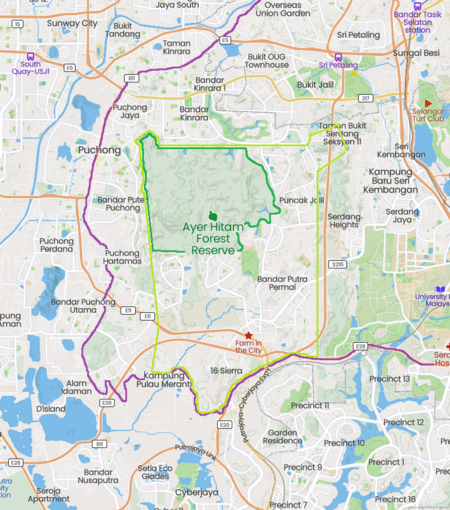
Kiri: Peta Hutan Simpan Ayer Itam, tahun 1950 (berdasarkan peta Surveyor General, Malaya, 1950 @ Australian National University: |"Malaysia, Malaya, Selangor 1950, Land Use, South Sheet, 1950, 1:126 720").
Kanan: Peta Hutan Simpan Ayer Itam, kini, secara kasar, berdasarkan peta Mapcarta. Garis Ungu: Jalan Ayer Itam - Klang Lama. Garis Hijau Muda: Sempadan asal Hutan Simpan. Garis Hijau Tua: Sempadan Hutan Simpan kini.
Bahagian barat laut (hulu Sungai Rasau) masih terpelihara berbanding bahagian lain: “Through observation also, it can be seen clearly that SISFEC still contains an untouched river landscape enclosed by the surrounding hills and have not suffered great disturbance. The river water is crystal clear, and teeming with aquatic life like fishes, shrimp, algae and specialised flora. The rocks are not the typical granite boulders, but seem to be sandstone, forming slow moving streams with deep pools, white sand banks and small delightful (terraced) waterfalls throughout their length. The riverine flora is dominated by the elegant Dipteris lobbiana and a grass-like rheophyte. Three main rivers landscapes found in this area namely the Rasau, Biring and Nasih Rivers (as shown in Figure 4). However, the Nasih and Biring River have been severely compromised by land development.” (Mohd Kher Hussein, Mohd Johari Mohd Yusof and Nor Syuriaty Jaafar @ Journal of Construction in Developing Countries, 25(2), 153–173, 2020: |"An Observational Study on Forest Landscape Conservation in Malaysia via the Establishment of Forestry Educational Centres", m.s.12).
Merujuk perbandingan di antara peta tahun 1950 dan kini di atas, bahagian selatan paling banyak dinyahwartakan, iaitu lebih separuh daripada keluasan keseluruhan. Ianya kini direntasi oleh Lebuhraya Putrajaya-Cyberjaya / Putrajaya-Cyberjaya Expressway (Federal Route 29) dan South Klang Valley Expressway (SKVE E26), serta petempatan-petempatan di sekitarnya, antaranya Bandar Bukit Puchong, Taman Saujana Puchong, Taman Lestari Puchong, Kota Perdana, Bandar Putra Permai (termasuk Alice Smith School), Taman Pinggiran Putra (termasuk Kompleks Pasar Borong Selangor), D'Alpinia, dan 16 Sierra.
Kawasan ternyahwarta di sebelah timur pula kini termasuk Taman Lestari Perdana dan Puncak Jalil. Lebuhraya Maju Expressway (MEX) menelusuri sempadan asal di sebelah timurnya.

